ZAGREB, Croatia – I was the first American to visit Rimac’s latest headquarters on the outskirts of Croatia’s capital Zagreb. When completed early next year, the 800,000 square-foot facility will host continued production of the brand’s flagship Nevera, a 1,914-horsepower, $2.2 million, all-wheel-drive, pure-electric hypercar. It has already set nearly two-dozen world records for acceleration and braking, including hustling from 0-60 mph in 1.7 seconds. But while Rimac, pronounced “ree-mahtz,” plans to attempt another world record in this pillarless concrete space, for fastest speed achieved inside a building, this was not where I drove the quickest vehicle in the world.
I did most of my driving on the highways, villages and hills of Croatia. Rimac completes two weeks of quality control assessments on every Nevera it builds, including up to 500 miles of shakedown driving, and it shows. Seams are even inside and out; everything works as it should, and the car doesn’t rattle like a 1970s Italian exotic or a 2020s Tesla. Perhaps this is a result of company founder and CEO Mate Rimac’s experience with his own Model S, of which he described to me the material quality being passable only “if you don't care too much, if you are not really a car person, and you don't care about all the details of the interior and stuff like that.”
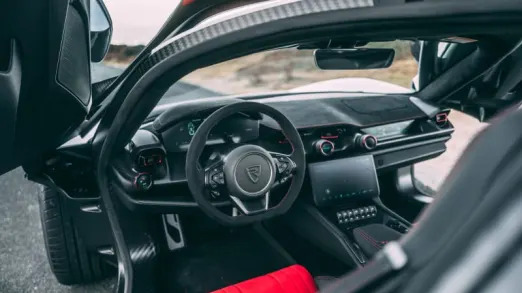
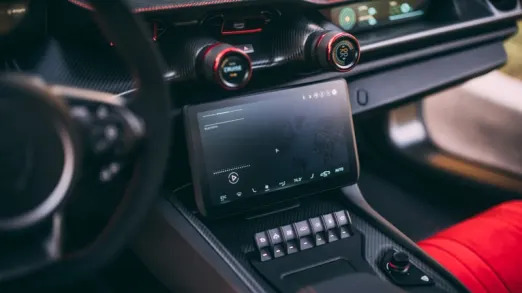
Moreover, the onboard tech feels in the Nevera’s service, supplementing its sense of joy, as opposed to working against it like the Pininfarina Battista’s difficult to see/use video side-view mirrors, and infotainment and instrument panels (that car’s drivetrain and carbon fiber tub are produced by Rimac, by the way). This was particularly evident in the easily applicable handful of drive modes controlled by a simple, knurled knob.
Range mode maximizes efficiency by favoring the front motors, though even in that setting, the range from the 120-kilowatt-hour worth of battery packs stashed beneath the floor, through the central tunnel and behind the seats will manage to achieve an estimated 300 miles, according to Rimac. Don't count on that if you plan on doing a few of those 1.7-second 0-60 blasts, though. A 0-80% charge takes just 25 minutes via a 350-kilowatt DC fast charger, though Rimac claims the car can accept 500-kW speeds once charging infrastructure gets there.
Cruise mode provides softer suspension settings and less aggressive acceleration and steering inputs. Sport mode ups the ante on all of those. I mostly vacillated between these two, the former on broader roads, the latter on winding roads. Both send power to the motors in the front and rear wheels – the rears produce significantly more – but limit output to 70% of the maximum horsepower. This isn’t unusual for cars with prodigious amounts of power, but seems like an especially good idea here.
Track mode stiffens and sharpens things further, and allows for all 1,914 horsepower and 1,725 pound-feet of torque to reach both ends. Drift mode sends all of the available power to the rear tires and shuts off the stability and traction controls, allowing you to play out whatever sadistic fantasies you may have toward pricey 315-millimeter section-width Michelin rubber.
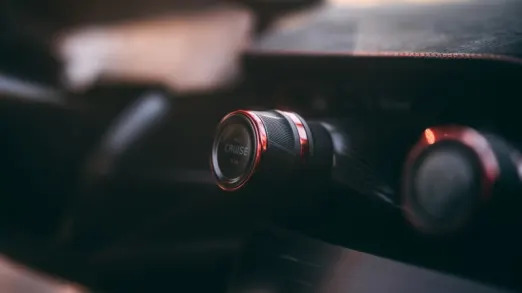
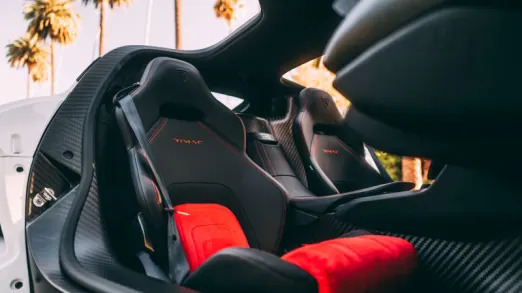
For our flat out 0-60 runs on the track, we used Track mode, appropriately enough. As much as I attempted to prepare myself for the experience of having my brain and internal organs shunted backward at 1.5 g, the actuality of hurtling forward in the Nevera proved something of a hurdle. I had just eaten a traditional Croatian lunch, but I didn’t feel nausea. It was more like slight disorientation, like I couldn’t process the speed. It wasn’t like that dream when you discover you can fly. More like the one when you find yourself falling. Into a black hole.
According to Mate Rimac, this experience might be relative.
“The consensus of the scientific community when the first trains came out was that humans were not built to travel at speed,” he said. “I think they said that, at 35 miles per hour, your brain will explode.”
I can attest that blasting from 0-60 in under 2 seconds did not cause such a cerebral rupture. Thought it was disconcerting to realize that I’d probably just experienced about the quickest I will ever accelerate in a car. At least one “with just tires, and without trickery,” as Rimac said, hinting, impishly, that he has such tricks up his sleeve.
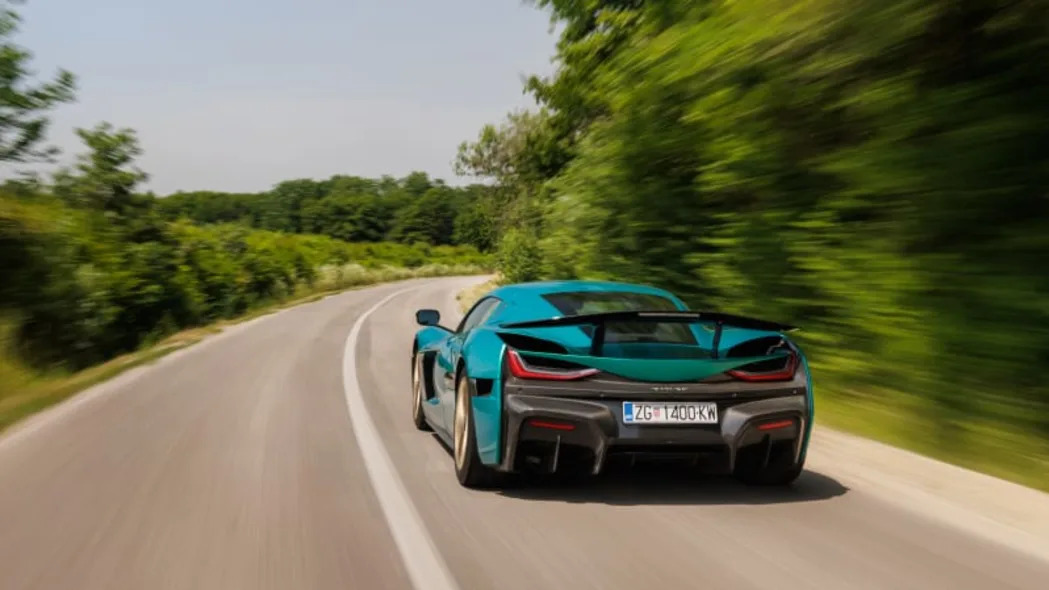
Surprisingly, the Nevera was quite supple on-road, and on the track. Its computer-controlled suspension scarfed imperfections, and while it has a lift – which works at all four corners, not just the nose – it wasn’t necessary to implement even when mounting the speed bumps that mark the entrance to many Croatian towns. Another instance of the car transcending physical limitations.
Braking is a slightly different issue. While the world-record-setting rotors are clearly extremely capable, the speed and litheness the Nevera boasts may have prevented me from considering the car’s mass as much as I should have. The torque-vectoring all-wheel-drive system may diligently distribute power from the individual motor in each wheel to maximize grip and provides additional salvation when things go awry on the road or on the track, but note that inertia in a 5,100-pound car is anything but inert.
Rimac has seen huge investment from Aston Martin, Bugatti, Koenigsegg and others, which have contracted it to aid development of performance-oriented battery-powered products. Those are big names. But Mate Rimac feels like his namesake company maintains a three- to five-year jump on the competition. And he is confident that it will continue to distinguish itself.
“Rimac must be more the crazy one, the rebel, doing things that might be unimaginable,” he said. “Because maybe six, seven years ago it was unimaginable that an electric car accelerates in less than 2 seconds from zero to 60. And what I want to do next is do more stuff that's maybe today unimaginable.”
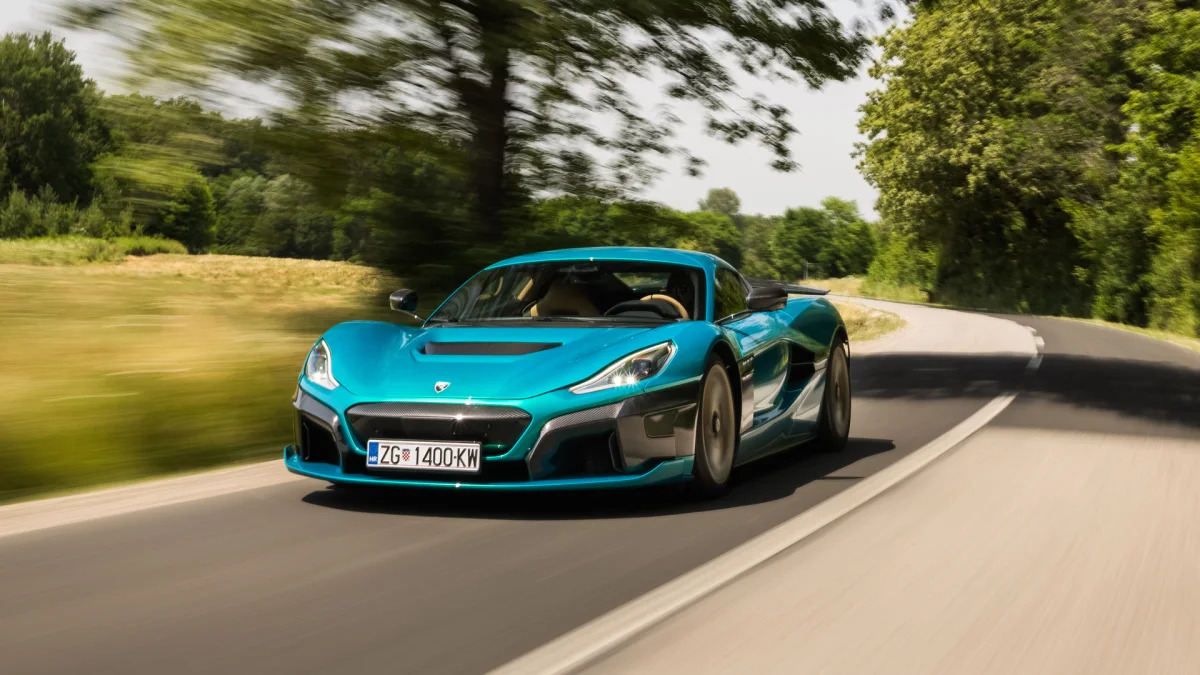









Sign in to post
Please sign in to leave a comment.
Continue